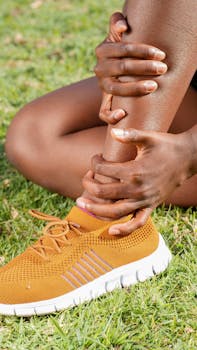
More Pain Management & Rehabilitation Articles
Effective Strategies for Shin Splints Treatment to Accelerate Recovery

Struggling with shin splints can be a painful experience for many athletes and active individuals. Understanding effective shin splints treatment is crucial to managing the discomfort and getting back to your regular activities. Shin splints, or medial tibial stress syndrome, refers to pain along the shin bone caused by stress on the bone and the tissues attaching muscles to it.
Understanding Shin Splints Treatment
Shin splints treatment often involves a combination of rest, ice, and supportive footwear. It is critical to allow the body time to heal to avoid worsening the condition. Below, we explore several effective strategies to facilitate recovery.
Rest and Recovery
The first step in shin splints treatment is adequate rest. This allows the inflamed muscles and tissues to repair themselves. Reducing high-impact activities like running or jumping during the recovery phase is essential. Consider engaging in low-impact exercises, such as swimming or cycling, to maintain fitness without further strain on your legs.
Ice Therapy
Applying ice to the affected area can help reduce swelling and alleviate pain. Ice packs should be used for 15-20 minutes every few hours, especially after activities, to effectively reduce inflammation.
Appropriate Footwear
Wearing the right shoes is vital in preventing and treating shin splints. Choose footwear that offers good arch support and cushioning to absorb impacts during physical activities. Athletes should also replace worn-out shoes regularly to prevent recurring injuries.
Stretching and Strengthening Exercises
Strengthening the core muscles and improving flexibility can significantly aid shin splints treatment. Exercises targeting the shin muscles and calf muscles, along with gentle stretching, can enhance stability and reduce the chances of developing shin splints. Consider including calf raises, toe taps, and anterior tibialis stretches in your routine.
Gradual Return to Activity
Once you’re pain-free, gradually ease back into your regular exercise regimen. It’s crucial to increase intensity, duration, and frequency incrementally to prevent recurrence. Listen to your body and adjust your workout as needed to avoid overexertion.
Seeking Professional Help
If shin splints persist despite at-home treatments, consider consulting a healthcare provider or physical therapist. They can offer personalized shin splints treatment plans and help identify any biomechanical issues contributing to the pain.
For those looking to adopt a more active lifestyle while managing conditions like shin splints, check out our guide on starting small with physical activity.
Prevention Strategies
Preventing shin splints is equally crucial. Ensure a proper warm-up routine, incorporate rest days into your schedule, and progressively increase physical activity intensity. Moreover, incorporating cross-training can prevent overuse injuries by diversifying your fitness routine.
Conclusion
Dealing with shin splints can be challenging, but with effective shin splints treatment strategies such as rest, ice, proper shoes, and gradual activity resumption, recovery is achievable. Remember to treat your body with care and consult a medical professional when necessary to ensure a smooth recovery journey.
- Shin splints are caused by stress on shin bone and surrounding tissues.
- Rest, ice therapy, and proper footwear are essential for treatment.
- Incorporate stretching and strengthening exercises to aid recovery.
- Consult a professional if pain persists despite home treatments.
- Prevention includes proper warm-ups and gradual activity increases.
FAQ
What causes shin splints?
Shin splints are primarily caused by repetitive stress on the shinbone and the surrounding tissues, often due to overuse, improper footwear, or sudden increases in physical activity.
Can shin splints heal on their own?
Yes, with adequate rest and proper at-home care such as icing and supportive footwear, shin splints can heal on their own. However, persistent symptoms should be evaluated by a healthcare professional.
Are there specific shoes recommended for shin splints?
Shoes with good arch support and cushioning are recommended for people suffering from shin splints. It’s also advisable to get shoe fittings to ensure the best support.
Is it safe to exercise with shin splints?
It’s best to avoid high-impact activities until the pain subsides. Low-impact exercises like swimming can be a safer alternative during recovery.
Where can I find more information about shin splints?
For a comprehensive understanding of shin splints, you can visit health information resources such as Wikipedia’s article on shin splints.
Other Articles You May Find of Interest...
- Is Runner’s Knee Causing Your Pain After Running? Discover Effective Treatments Now
- Is It Safe to Combine Hydrocodone and Ibuprofen?
- Unraveling the Mystery of Why You Feel So Weak?
- Navigating the Different Headaches: Identifying Types and Finding Relief
- Effective Exercises to Alleviate Wrist Joint Pain
- Relief Strategies for Managing Female Lower Back and Hip Pain
- Effective Strategies for Shin Splints Treatment to Accelerate Recovery














